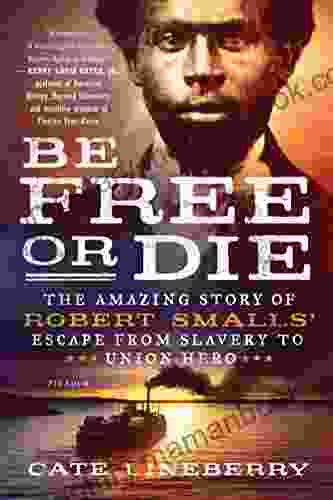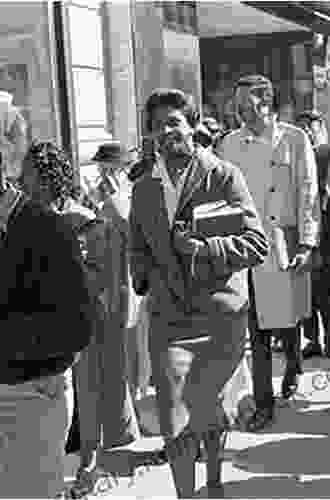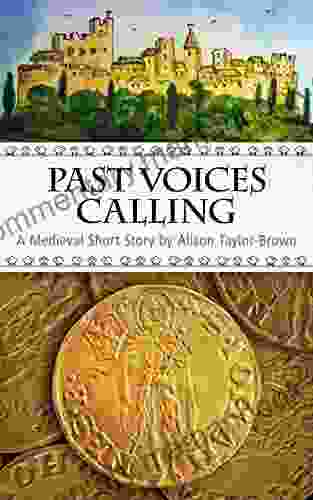Black Students and the Racial Reconstitution of Higher Education (1965 - 1972)

The period between 1965 and 1972 witnessed a profound transformation in American higher education, marked by the rise of Black student activism and the subsequent adoption of policies aimed at increasing the enrollment and retention of Black students. This "racial reconstitution" of higher education had a profound impact on the American educational landscape, opening up new opportunities for Black students and challenging traditional notions of racial hierarchy.
This article examines the role of Black students in driving this transformation, exploring the strategies they employed, the obstacles they faced, and the lasting impact of their activism.
4.6 out of 5
| Language | : | English |
| File size | : | 1353 KB |
| Text-to-Speech | : | Enabled |
| Enhanced typesetting | : | Enabled |
| Word Wise | : | Enabled |
| Print length | : | 254 pages |
| Screen Reader | : | Supported |
Origins of Black Student Activism
The roots of Black student activism can be traced to the broader civil rights movement of the 1950s and 1960s. As Black Americans fought for equal rights and opportunities, they recognized the importance of higher education as a means of achieving social and economic mobility. However, Black students faced significant barriers to accessing and succeeding in higher education, including segregation, discrimination, and a lack of resources.
In response to these challenges, Black students began to organize on college campuses, forming student unions and advocacy groups. These organizations provided a platform for Black students to voice their concerns, demand changes in university policies, and advocate for their own interests.
Key Strategies and Demands
Black student activists employed a range of strategies to advance their goals, including:
Nonviolent protests: Students used sit-ins, marches, and rallies to draw attention to their demands and challenge discriminatory practices.
Lobbying and negotiations: Students met with university administrators and government officials to negotiate changes in policies and funding.
Student strikes: In some cases, students resorted to strikes as a last resort to disrupt campus operations and force the administration to address their demands.
The demands of Black student activists focused on three key areas:
Increased enrollment: Students demanded that universities increase the number of Black students admitted and enrolled.
Improved academic support: Students called for the creation of programs and resources to support Black students academically, including tutoring, counseling, and scholarships.
Black studies programs: Students demanded the establishment of black studies programs to provide a curriculum that reflected their history, culture, and perspectives.
Challenges and Obstacles
The path to racial reconstitution was not without its challenges. Black student activists faced resistance from university administrators, white students, and government officials who sought to maintain the status quo.
Some administrators argued that increasing Black enrollment would lower academic standards, while others feared that it would lead to racial unrest on campus. White students sometimes expressed resentment towards Black students, seeing them as a threat to their own opportunities.
Government officials, particularly during the Nixon administration, viewed Black student activism with suspicion and hostility. The FBI infiltrated Black student groups and harassed their leaders, while the government reduced funding for programs that supported Black students.
Impact and Legacy
Despite the challenges, the Black student movement of the 1960s and 1970s achieved significant successes. Universities across the country increased their Black student enrollment, established Black studies programs, and implemented new support services for Black students.
The racial reconstitution of higher education had a profound impact on American society. It opened up new avenues for Black students to pursue educational opportunities, and it helped to break down traditional barriers to Black achievement. Furthermore, the activism of Black students inspired a generation of future leaders and activists.
Today, the legacy of Black student activism can be seen in the vibrant Black student communities and the commitment to diversity and inclusion that exists on many college campuses. The racial reconstitution of higher education is an ongoing process, and the struggles and victories of the past continue to shape the present.
The racial reconstitution of higher education that took place between 1965 and 1972 was a transformative moment in American history. Black students played a central role in this transformation, challenging the status quo and demanding a more just and equitable educational system. Their activism had a lasting impact, opening up new opportunities for Black students and reshaping the American educational landscape.
As we continue to grapple with issues of race and inequality in American society, the lessons learned from the Black student movement of the 1960s and 1970s remain relevant and inspiring.
4.6 out of 5
| Language | : | English |
| File size | : | 1353 KB |
| Text-to-Speech | : | Enabled |
| Enhanced typesetting | : | Enabled |
| Word Wise | : | Enabled |
| Print length | : | 254 pages |
| Screen Reader | : | Supported |
Do you want to contribute by writing guest posts on this blog?
Please contact us and send us a resume of previous articles that you have written.
 Top Book
Top Book Novel
Novel Fiction
Fiction Nonfiction
Nonfiction Literature
Literature Paperback
Paperback Hardcover
Hardcover E-book
E-book Audiobook
Audiobook Bestseller
Bestseller Classic
Classic Mystery
Mystery Thriller
Thriller Romance
Romance Fantasy
Fantasy Science Fiction
Science Fiction Biography
Biography Memoir
Memoir Autobiography
Autobiography Poetry
Poetry Drama
Drama Historical Fiction
Historical Fiction Self-help
Self-help Young Adult
Young Adult Childrens Books
Childrens Books Graphic Novel
Graphic Novel Anthology
Anthology Series
Series Encyclopedia
Encyclopedia Reference
Reference Guidebook
Guidebook Textbook
Textbook Workbook
Workbook Journal
Journal Diary
Diary Manuscript
Manuscript Folio
Folio Pulp Fiction
Pulp Fiction Short Stories
Short Stories Fairy Tales
Fairy Tales Fables
Fables Mythology
Mythology Philosophy
Philosophy Religion
Religion Spirituality
Spirituality Essays
Essays Critique
Critique Commentary
Commentary Glossary
Glossary Bibliography
Bibliography Index
Index Table of Contents
Table of Contents Preface
Preface Introduction
Introduction Foreword
Foreword Afterword
Afterword Appendices
Appendices Annotations
Annotations Footnotes
Footnotes Epilogue
Epilogue Prologue
Prologue Dan Ames
Dan Ames Laurence J Brahm
Laurence J Brahm Essa Hansen
Essa Hansen Ken Eidson
Ken Eidson Ingrid Chalufour
Ingrid Chalufour Jeffrey Koval Jr
Jeffrey Koval Jr Greg Paull
Greg Paull Jason Hooper
Jason Hooper Donald S Passman
Donald S Passman Paul Hanley
Paul Hanley Enthralling History
Enthralling History Mel Bay
Mel Bay Rachel Mcmillan
Rachel Mcmillan Verwayne Greenhoe
Verwayne Greenhoe Charbak Dipta
Charbak Dipta William Sharp
William Sharp Stephen Batchelor
Stephen Batchelor Annette Lacroix
Annette Lacroix Erika Hiwiller
Erika Hiwiller Adam Bushnell
Adam Bushnell
Light bulbAdvertise smarter! Our strategic ad space ensures maximum exposure. Reserve your spot today!

 Logan CoxFighting Endlessly To Be The Best: A Journey of Perseverance, Dedication, and...
Logan CoxFighting Endlessly To Be The Best: A Journey of Perseverance, Dedication, and... Todd TurnerFollow ·14.9k
Todd TurnerFollow ·14.9k Mike HayesFollow ·10.7k
Mike HayesFollow ·10.7k Glenn HayesFollow ·3.2k
Glenn HayesFollow ·3.2k Frank ButlerFollow ·15.2k
Frank ButlerFollow ·15.2k Alexandre DumasFollow ·16.5k
Alexandre DumasFollow ·16.5k Clarence BrooksFollow ·10.6k
Clarence BrooksFollow ·10.6k Gabriel HayesFollow ·3.1k
Gabriel HayesFollow ·3.1k William GoldingFollow ·7.5k
William GoldingFollow ·7.5k

 Kelly Blair
Kelly BlairSheppard Lee Written By Himself: A Journey of...
In the realm of...

 George Bernard Shaw
George Bernard ShawViper Naga Brides: Unveiling the Enthralling Fantasy...
In the realm of...

 Neil Gaiman
Neil GaimanOnce Upon a Hill in Tuscany: A Medieval Short Story
In the heart of medieval...

 Preston Simmons
Preston SimmonsBody Bereft: Exploring Loss, Love, and Legacy in Antjie...
A Poetic Requiem for the Lost:...

 Percy Bysshe Shelley
Percy Bysshe ShelleyThe Amazing Story Of Robert Smalls Escape From Slavery To...
The life of Robert Smalls is a testament to...
4.6 out of 5
| Language | : | English |
| File size | : | 1353 KB |
| Text-to-Speech | : | Enabled |
| Enhanced typesetting | : | Enabled |
| Word Wise | : | Enabled |
| Print length | : | 254 pages |
| Screen Reader | : | Supported |












